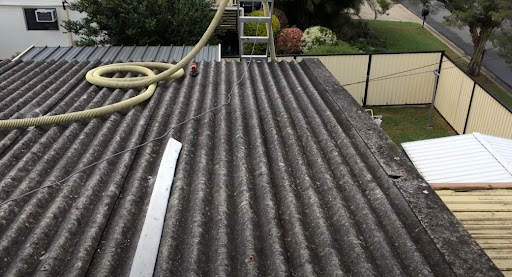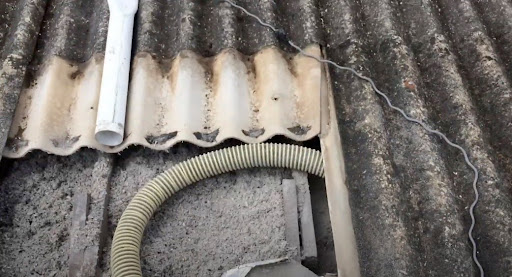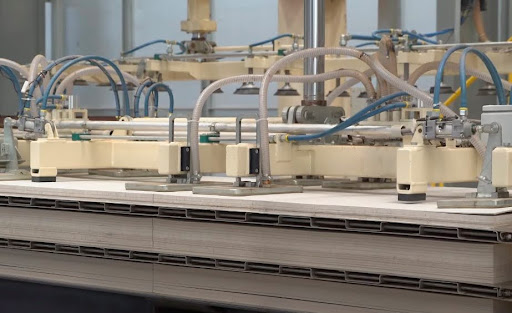When it comes to roofing, the material you choose is a pivotal decision that affects the longevity, efficiency, and aesthetic of your home. Super Six roofing, a term frequently heard in the construction realm, stands out among the array of choices available. This article dives deep into the world of Super Six roofing, comparing it with other popular roofing materials to give homeowners, builders, and designers a clear picture of its benefits and drawbacks.
What is Super Six Roofing?

Super Six roofing is a type of roofing material made from fiber cement. It was first developed as a roofing solution containing asbestos, a naturally occurring mineral known for its heat resistance and durability. However, due to the health risks associated with asbestos, modern Super Six roofing products are asbestos-free, offering a safer alternative.
Super Six roofing is primarily composed of the following key materials:
- Cement: The base material of Super Six roofing is Portland cement, which provides strength and stability to the product.
- Fibers: Reinforcing fibers, such as cellulose or synthetic fibers, are added to enhance the roofing’s structural integrity and resistance to cracking.
- Fillers: Various fillers, including silica, are included to improve the material’s fire resistance and insulation properties.
- Pigments: Pigments are added to the mixture to give Super Six roofing its color and aesthetic appeal.
Comparing Super Six Roofing with Other Materials
Super Six vs. Asphalt Shingles
Super Six roofing is lauded for its durability and longevity, significantly outlasting asphalt shingles. While asphalt shingles are a more cost-effective option initially, Super Six’s longevity often leads to greater long-term savings. The decision between the two often hinges on immediate budget constraints and long-term investment considerations.
- Durability: Super Six often lasts longer than the typical 20-year lifespan of asphalt shingles.
- Cost: Asphalt shingles are cheaper upfront, but Super Six may be more economical over time, with costs for a 1,500-square-foot home ranging from $2,100 to $4,800 for asphalt.
- Aesthetic: Super Six maintains a classic appearance, whereas asphalt shingles offer a variety of colors and textures.
Super Six vs. Metal Roofing
Both Super Six and metal roofing are known for their durability and weather resistance, making them strong contenders in the roofing market. Metal roofing is often favored in extreme weather conditions due to its resilience and variety of aesthetic options. Conversely, Super Six provides a more understated, traditional look and is competitive in terms of cost and longevity.
- Weather Resistance: Metal roofing excels in harsh weather conditions, while Super Six is also durable but with a classic look.
- Cost: The installation cost for metal roofing on a 1,500 sq. ft. home ranges approximately $7,500 to $15,000, competitive with Super Six’s long-term value.
- Aesthetic Variety: Metal roofing offers a wider range of colors and styles, whereas Super Six is known for its traditional aesthetic.
Super Six vs. Clay Tiles
Comparing Super Six to clay tiles involves considering weight, maintenance, and cost. Super Six is lighter, reducing the structural burden on homes, while clay tiles are heavier and may require additional structural support. Both offer long lifespans and low maintenance, but the initial installation cost and potential need for structural reinforcement with clay tiles can be significant.
- Weight: Super Six is significantly lighter than clay tiles, offering advantages in ease of installation and structural requirements.
- Maintenance: Both are low maintenance, yet clay tiles are more prone to breakage and might need more attentive care.
- Cost: Clay tiles range from $10.50 to $18.50 per square foot with potential extra costs for structural reinforcement, whereas Super Six offers a more cost-effective solution when considering its longevity and less intensive installation requirements.
Advantages of Super Six Roofing
Durability
Super Six roofing is known for its exceptional durability. It offers several advantages in terms of longevity:
- Resistance to Rot: One of the key benefits of Super Six roofing is its resistance to rot. Unlike some other roofing materials, Super Six does not decay when exposed to moisture over time. This resistance to rot ensures that the roofing remains intact and functional for many years.
- Termite Resistance: Super Six is also highly resistant to termites and other wood-boring pests. This feature is particularly important for homeowners in areas prone to termite infestations. With Super Six roofing, you can rest assured that your roof won’t become a target for destructive insects.
- Fire Resistance: Fire safety is a critical consideration for any roofing material. Super Six roofing is fire-resistant, making it an excellent choice for areas prone to wildfires or for homeowners who want to enhance the safety of their homes. It provides a protective barrier that can help prevent the spread of fires.
Cost-Effectiveness
Super Six roofing is cost-effective over the long term due to its durability and relatively low maintenance requirements:
- Long Lifespan: Super Six roofing has a long lifespan, often exceeding that of many other roofing materials. This means you won’t need to replace your roof as frequently, saving you money on replacement costs.
- Low Maintenance: Super Six roofing requires minimal maintenance. Routine inspections and occasional cleaning are usually sufficient to keep it in good condition. The reduced maintenance needs contribute to its cost-effectiveness.
- Energy Efficiency: Super Six roofing can also contribute to energy savings. Its thermal insulation properties help regulate the temperature inside your home, reducing the need for excessive heating or cooling. This, in turn, can lead to lower energy bills.
Insulation
Super Six roofing offers excellent thermal insulation properties, providing several benefits:
- Temperature Regulation: Super Six roofing helps to maintain a comfortable indoor temperature throughout the year. In the summer, it keeps your home cooler by reflecting heat, while in the winter, it helps to retain warmth, reducing heating costs.
- Energy Efficiency: The improved insulation properties of Super Six can lead to energy savings. A well-insulated home requires less energy for heating and cooling, reducing your overall energy consumption and carbon footprint.
Disadvantages of Super Six Roofing
Installation Expertise
Proper installation of Super Six roofing is crucial for its effectiveness and longevity. This disadvantage comes with the following considerations:
- Skilled Professionals Required: Installing Super Six roofing requires expertise and experience. It’s not a DIY project for the average homeowner. Hiring skilled professionals is essential to ensure that the roofing is installed correctly, minimizing the risk of leaks or structural issues.
- Potential for Mistakes: If not installed properly, Super Six roofing can develop problems over time. Incorrect installation can lead to leaks, poor insulation, and reduced durability. Therefore, it’s essential to invest in qualified installers to avoid future issues.
Limited Styles
Compared to some other roofing materials, Super Six roofing offers fewer aesthetic options, which can be a drawback for homeowners seeking specific visual appeal:
- Limited Design Variety: Super Six roofing primarily comes in a corrugated or ribbed pattern, which may not suit all architectural styles or personal preferences. Homeowners who prioritize a wide range of design choices may find Super Six to be limiting in this regard.
- Color Options: While Super Six roofing is available in various colors, the palette may not be as extensive as that of other roofing materials. This can make it challenging to find the perfect color match for your home’s exterior.
Environmental Impact
Although Super Six roofing is asbestos-free, its production and disposal must be carefully managed due to environmental concerns:
- Production Considerations: The manufacturing process of Super Six roofing materials involves various raw materials and energy consumption, which can have an environmental impact. Manufacturers should implement sustainable practices to minimize this impact.
- Disposal Challenges: When Super Six roofing reaches the end of its lifespan, proper disposal is essential. Special precautions must be taken, as Super Six contains non-biodegradable materials. Recycling or disposing of it in an environmentally responsible manner is crucial to avoid harm to the ecosystem.
Conclusion
Super Six roofing stands as a formidable option in the vast arena of roofing materials. Its durability, cost-effectiveness, and safety profile make it a compelling choice for many homeowners. By comparing it to other popular materials, it’s clear that while it has distinct advantages, the best roofing choice depends on specific needs, preferences, and local climate conditions. Understanding the unique qualities of Super Six roofing helps in making an informed decision that ensures a safe, comfortable, and beautiful home for years to come.
FAQs
Is Super Six roofing safe?
Yes, modern Super Six roofing is manufactured without asbestos and is considered safe when installed and maintained properly.
How long does Super Six roofing last?
Super Six roofing can last over 50 years with proper installation and maintenance, outperforming many other materials.
Can Super Six roofing be painted?
Yes, it can be painted to refresh its appearance or change its color, adding to its versatility.
Is Super Six roofing more expensive than other materials?
While the initial cost might be higher than some materials, its longevity and durability often lead to long-term savings.




